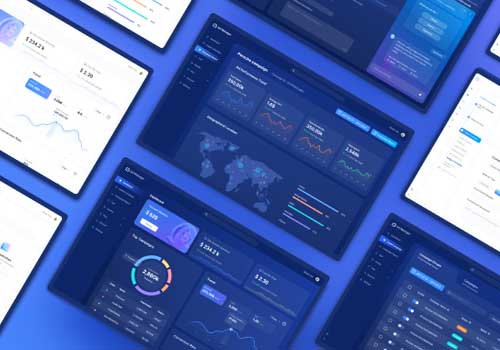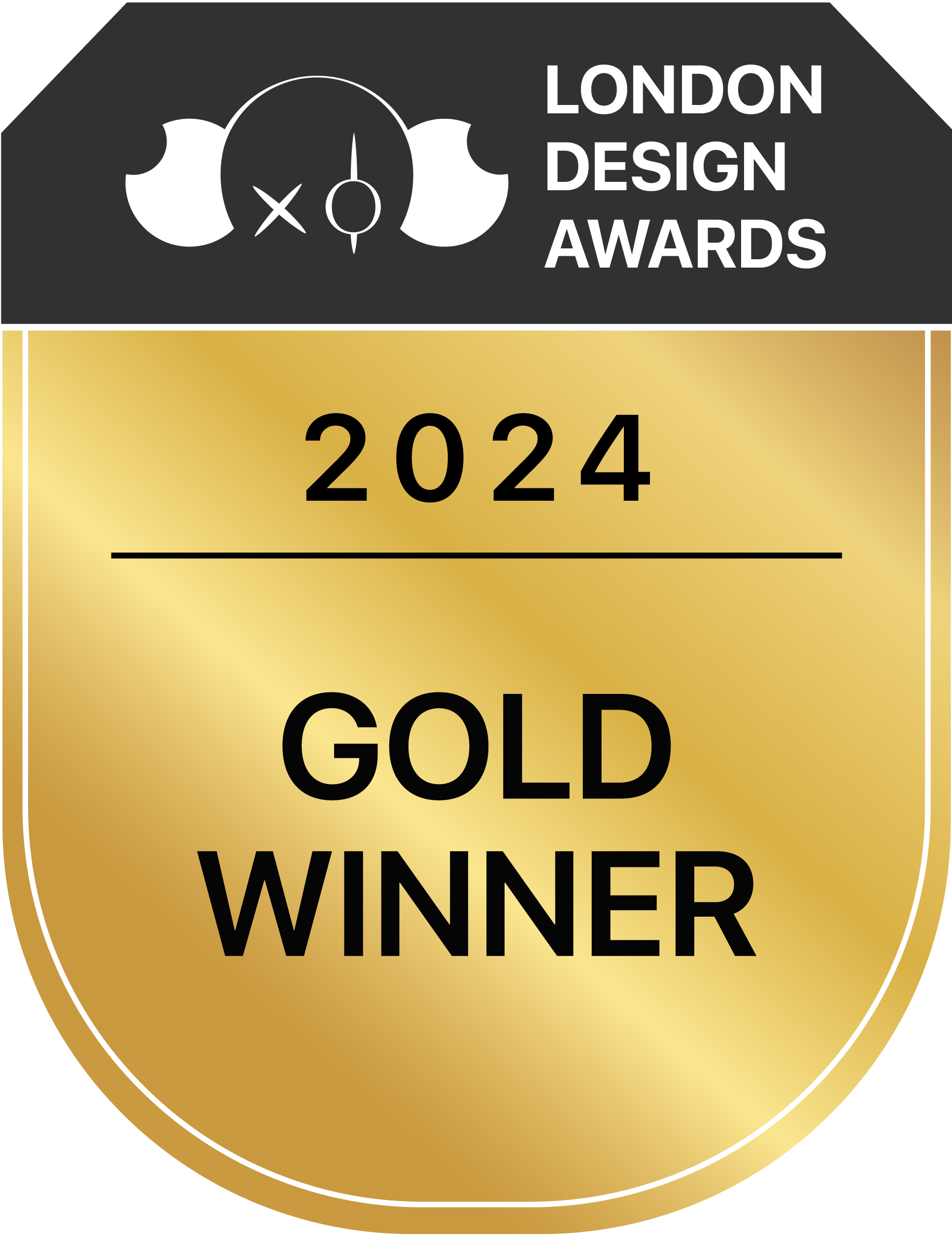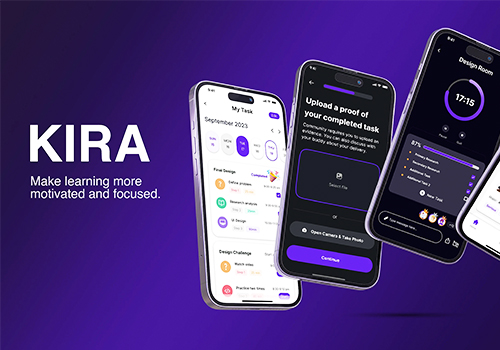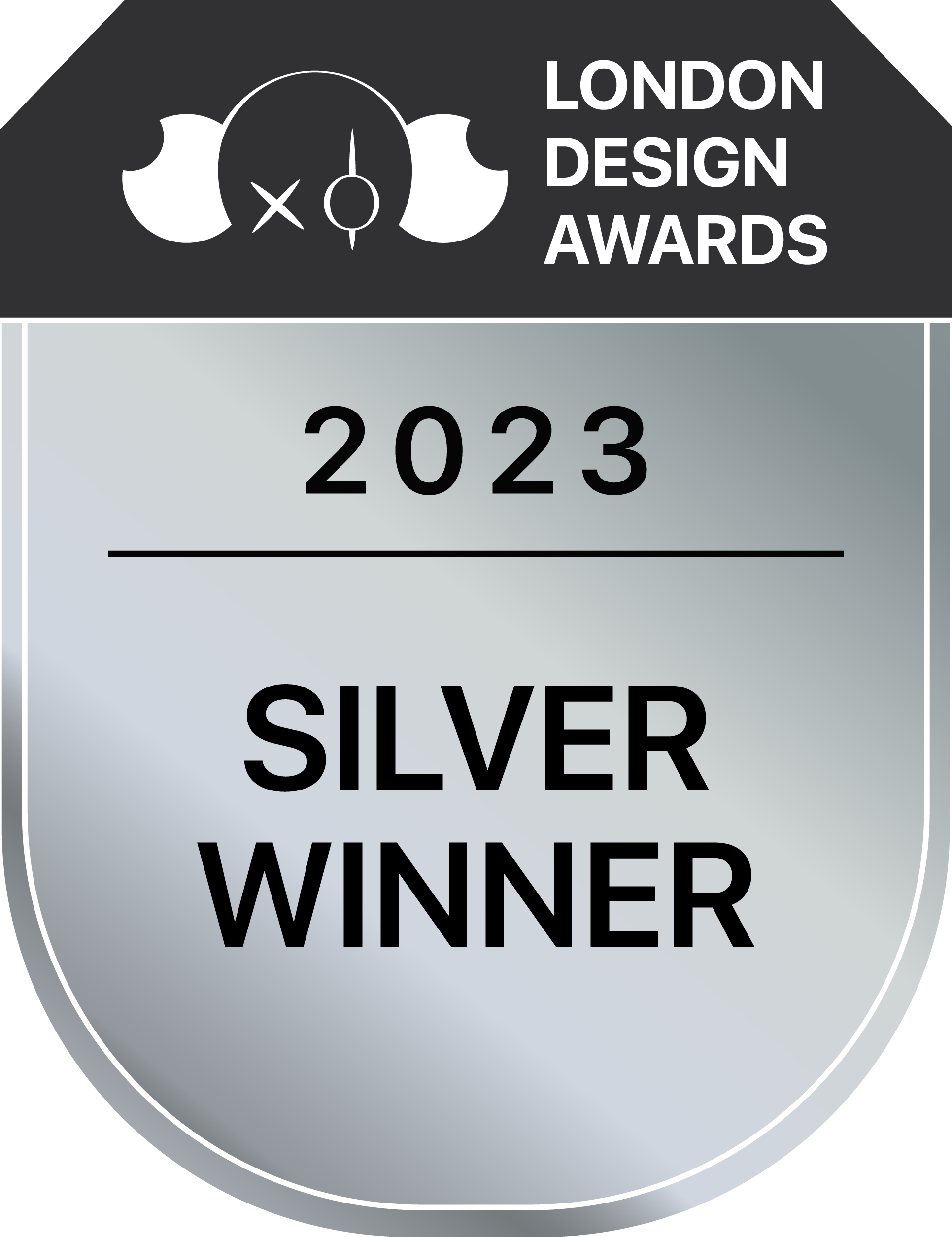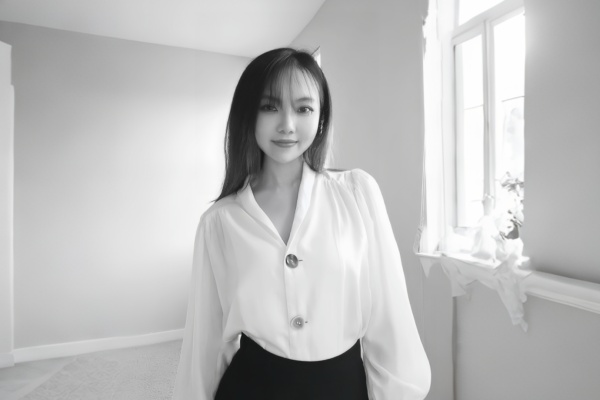
Wei Wang
1. Congratulations on winning the London Design Awards! Can you introduce yourself and share about what inspired you to pursue design as a career?
Thank you! I’m a designer obsessed with the intersection of psychology and technology, especially how subtle behavioural nudges can transform habits. KIRA was born from my own university struggles with focus, combined with observing how traditional productivity tools felt punitive. I wanted to create something that made self-improvement feel organic, even joyful.
KIRA rethinks procrastination tools by replacing willpower with social dynamics. London Design Awards-winning system pairs users as accountability partners and transforms solitary studying into a shared journey, proving design can hack motivation through human connection, not just algorithms.
2. What does being recognised in the London Design Awards mean to you?
Being recognised by the London Design Awards is both an honour and a validation of my core belief: that design should solve human problems with equal parts ingenuity and empathy. For KIRA, this award isn’t just about aesthetics—it acknowledges how thoughtfully crafted interactions can rewire behaviour.
Seeing our approach to combating procrastination (through social accountability rather than punitive measures) resonate with an international jury confirms that impactful design transcends cultural boundaries. It also reinforces my commitment to creating tools that don’t just serve users but understand them—a philosophy I’ll keep advancing through future projects.
3. How has this achievement impacted your career, team, or agency, and what opportunities has it brought so far?
Professional Recognition: The London Design Awards for KIRA has strengthened my credibility as a designer working at the intersection of technology and behavioral psychology. The award has led to meaningful discussions with educators and designers interested in our unique approach to combating procrastination through social accountability rather than restrictive measures.
Project Development: Following the award, we've seen increased interest from academic institutions exploring how KIRA's peer-based model could be adapted for different learning environments. The recognition has helped validate our design philosophy – that supporting users' intrinsic motivation yields better long-term results than punitive systems. This has opened doors to more nuanced conversations about ethical behaviour design.
Ongoing Influence: The award has given KIRA a platform to influence how student productivity tools are conceptualised. It continues to serve as a case study in balancing functionality with psychological insight – a principle I apply to all my projects. The real impact lies in how it's prompted designers and educators to rethink traditional approaches to digital wellness.
4. What role does experimentation play in your creative process? Can you share an example?
Experimentation is the backbone of my creative methodology—it’s how I transform theoretical concepts into tangible, human-centred solutions. I treat each project as a series of hypotheses to test, with iterative prototyping and behavioural observation guiding every decision. Failure isn’t just accepted; it’s systematised as a critical feedback loop.
5. What's the most unusual source of inspiration you've ever drawn from for a project?
Oddly enough, the most unexpected inspiration for KIRA came from watching competitive fishing tournaments, where teammates use real-time radar to track each other’s catches. I realised procrastination isn’t a solo struggle; it thrives in isolation.
So we designed KIRA’s co-study rooms to work like those fishing boats: partners "see" each other’s progress in real-time (like sonar pings for productivity) and send instant encouragement. The London Design Awards jury may call it "a stroke of absurd brilliance," but it works. When students told us they felt ‘hooked’ to their goals, we knew the metaphor had landed.
6. What’s one thing you wish more people understood about the design process?
I wish more people understood that great design isn’t about making things look good—it’s about making them feel inevitable.
Take KIRA’s accountability system: The ‘two-button’ interface (which won the London Design Awards) seems obvious now, but it emerged from cutting features, not adding them. We stripped away 80% of the original UI through relentless testing—because true simplicity isn’t a starting point, it’s the hard-won result of strategic subtraction.
The magic happens when a solution feels so natural that users forget it was designed at all. That’s not minimalism for aesthetics; it’s psychological precision.
7. How do you navigate the balance between meeting client expectations and staying true to your ideas?
Navigating the balance between client expectations and your creative vision requires clarity, communication, and compromise. Start by deeply understanding the client’s goals—sometimes their requests are symptoms of a larger need.
Then, advocate for your ideas with confidence, backing them with logic, research, or examples that demonstrate their value. Choose your battles wisely, standing firm on what truly matters while remaining flexible on subjective preferences.
Ultimately, the goal isn’t to "win" but to collaborate in a way that satisfies the client and preserves the integrity of your work. If the relationship stifles your ability to create meaningful solutions, it may be time to reassess. The best outcomes happen when trust and mutual respect allow both sides to thrive.
8. What were the challenges you faced while working on your award-winning design, and how did you overcome them?
Working on my award-winning design came with three key challenges: aligning bold creativity with client constraints, navigating tight deadlines, and ensuring the solution was both innovative and functional. The client initially wanted a safe, conventional approach, but I believed a more experimental direction would better serve their goals.
To bridge the gap, I presented data-driven case studies and iterative prototypes to prove the value of my vision while incorporating their feedback. The time crunch forced me to prioritise ruthlessly, focusing on core features first and refining details later.
Finally, to balance innovation with usability, I conducted rapid user testing and adjusted the design in real time. The result was a project that satisfied the client, resonated with users, and stood out in competition, proving that constraints can fuel, not hinder, great design.
9. How do you recharge your creativity when you hit a creative block?
When I hit a creative block, I step away from the problem entirely—whether by taking a walk in nature, diving into an unrelated art form, or immersing myself in a completely different field (like science or music).
Changing my physical and mental environment disrupts stagnant thinking, while exposure to new stimuli often sparks unexpected connections. I also keep a "swipe file" of inspiring work, not to copy but to reverse-engineer the thinking behind it.
Most importantly, I remind myself that creativity isn’t linear; rest and boredom are essential parts of the process. Returning with fresh eyes usually reveals solutions that felt out of reach before.
10. What personal values or experiences do you infuse into your designs?
My designs are deeply influenced by my belief in clarity through simplicity, a principle shaped by years of observing how people interact with the world, whether through teaching, travelling, or even struggling with poorly designed systems myself. I prioritise empathy (from volunteering with non-profits, where accessibility wasn’t a buzzword but a necessity) and courage (my immigrant background taught me to challenge norms respectfully).
Every project carries traces of my obsession with storytelling—not just aesthetics, but narratives that make users feel seen. And because I’ve seen how thoughtless design can exclude people, I bake in inclusivity from the start, not as an afterthought.
Ultimately, my work is a bridge between my core question: "Does this honour the human experience?" and the client’s goals.
11. What is an advice that you would you give to aspiring designers aiming for success?
Here’s the advice I wish I’d heard earlier: "Design for impact, not applause."
Success isn’t just about sleek portfolios or trends—it’s about solving real problems with humility and rigour. Master the fundamentals (typography, hierarchy, UX laws) because rules must be understood before they’re broken. Embrace constraints—they’re your secret weapon for innovation.
But most importantly, design like a human first: listen more than you pitch, prototype relentlessly, and measure success by how your work improves lives, not just aesthetics.
And a tactical tip? Steal time, not styles. Study how great designers think, not just what they make. Your unique voice will emerge from your obsessions, failures, and the questions you refuse to stop asking.
12. If you could collaborate with any designer, past or present, who would it be and why?
If I could collaborate with anyone, it would be Dieter Rams—not just for his iconic Braun designs, but for his ruthless pursuit of "less but better." His 10 principles of good design (like "good design is unobtrusive" and "innovative") are timeless ethics, not just aesthetics.
I’d want to dissect how he balanced function with quiet beauty, and how he defended his philosophy in an era of excess. Plus, his work whispers; it doesn’t shout—a skill I’m still learning.
13. What's one question you wish people would ask you about your work, and what's your answer?
Question I Wish People Asked: How do you measure the real-world impact of your designs beyond aesthetics?
My Answer: I track three layers of success.
Functional: Does it solve the problem efficiently? (Metrics: reduced user steps, increased engagement, or client KPIs met.)
Emotional: Do people feel something—trust, delight, clarity? (I scour user interviews for phrases like "This just makes sense".)
Ripple Effects: Did it free up the client’s time, spark a team’s confidence, or accidentally improve something unrelated? (Example: A nonprofit’s rebrand led to 40% more volunteer sign-ups.)
The best designs create silent victories—where the work disappears, and the experience takes centre stage.
